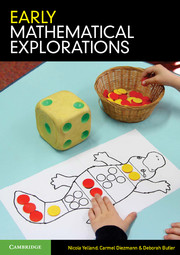Overview
In this chapter you will become familiar with:
the beginning processes for early mathematical understandings – describing attributes, matching, comparing, ordering, sorting and patterning
the mathematical concepts of number, measurement, space, and chance and data, and the ways in which these relate to the everyday experiences of young children
the importance of language in exploring mathematics in the early years, as well as the use of children’s literature to support mathematical thinking
playful explorations as a pedagogical process to stimulate early mathematical learning.
Young children are curious from the moment they are born. They look around them, explore objects that they encounter and communicate with utterances in interactions with others. From birth to five years of age, which is generally when compulsory schooling begins, there are many different ways in which the foundations for mathematical understandings are established. The activities and experiences are usually informal and play-based, but there are also opportunities for teachable moments in which a teacher might consolidate particular language or highlight relationships that are fundamental to mathematical thinking and understandings. For example, when telling a child the story of The Very Hungry Caterpillar by Eric Carle, there are many opportunities for the adult to create contexts for understanding mathematical concepts and processes. These are shown in Table 2.1. As well as spanning the concepts of number, measurement, space, and chance and data, these opportunities provide a context for using language to communicate ideas and understandings about the various relationships that occur in the story.
